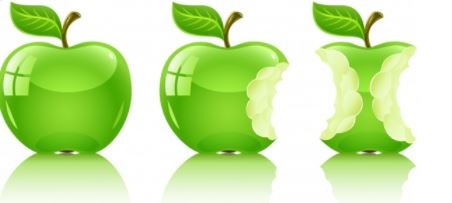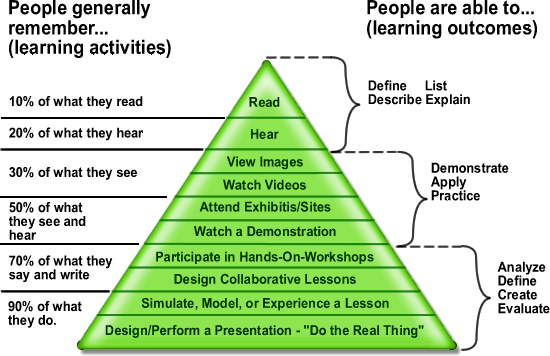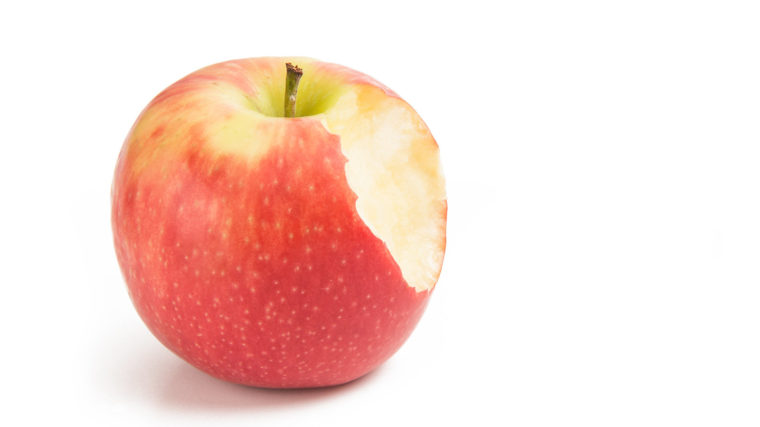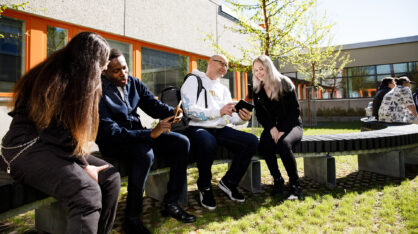“The whole purpose of education is to turn mirrors into windows.” | Sydney J. Harris
Business as usual
I have been a teacher for quite a long time and I find myself a good teacher. I always put the student in the center and use fair evaluation methods. I get mostly good feedback from the students, which is encouraging. It is not always easy to see the results of one´s work as a teacher, so getting feedback is nice. However, since that seminar 4 years ago, I started to question my role as a teacher as well as my teaching methods.
I knew from both theory and my own experiences, that students have different ways of learning. However, I had not seen it as my task to meet all the requirements of different learning styles. I had rather seen the students as a group and expected every student to adapt to my way of teaching. I had been telling myself that my organization had not allocated enough time for me to differentiate my teaching methods. It was not up to me if the student learned or not. It was entirely up to the student to pay attention and follow the schedule. That was business as usual.
The more I started thinking of the student as the customer and about how he/she experienced the learning process, the more I started questioning my doings. Could there be things I could do differently or even better in my planning and execution of my courses? Could I perhaps rethink my doings? How do the students learn best? What is the main point of lecturing? Am I just wasting my time and their time or do I help the students to learn? I know now and knew then that students need clear goals and sub-goals to keep the motivation and learn. Maybe I could realize my courses in such a way that I would provide the student with a clear learning path for the course. By dividing the course into smaller steps or tasks, I could help the students to take ownership of his/her own learning experiences. Then I might even have time to help those who need help the most. What is the difference between teaching and coaching?
A new journey
These were my reflections and thoughts as I set out on my journey to develop a new way of teaching, something that I now call task-oriented learning. I have obtained a lot of support from numerous discussions with my nearest colleagues. Thank you all for the encouragement received over the years.
The main idea is to present the learning sources in a versatile way and keep up the momentum through small tasks. The student learns bite by bite and earns points for all learning activities. The points represent earned skills and the assessment method is based on the earned points. I have during the years learned to know, that there is a theoretical framework called “task-based learning”, which has similar ideas and is used mostly in language teaching. When developing the pedagogical approach to task-oriented learning, I was initially inspired by the 4C/ID Model focusing on four components (1) learning tasks, (2) supportive information, (3) just-in-time information, and (4) part-task practice (Jeroen J. G. van Merriënboer, et al., 2002).
Nowadays, I like to compare learning with eating an apple. You learn piece by piece and if you manage to keep the focus, you will reach your learning goals. If you google “Bite-Sized Learning” you will find articles supporting this way of learning. You will also find articles suggesting that this might be the appropriate approach for eLearning courses. According to my belief, it is also of the utmost importance that you as a student write down your goals, and ambitions before you start your learning path, in this case, a course. Likewise, you should end the learning process by doing a post-reflecting task. While reflection is about having a dialogue with yourself, it will support deep learning.

On this journey, I have found new perspectives on teaching and learning. I have put names on these phenomena and I am eager to share some of my thoughts and experiences with you. I will break down the discussion into (1) The Learning Pyramid, (2) The role of the teacher, (2) Lean in Teaching, (4) Task-Oriented Learning, (5) Blended Learning and, last but not least (6) Moodle as the Learning Platform. In this article, I will reflect on the learning pyramid, also known as the cone of learning, but I hope I will have the opportunity to get back to the others in future articles.
The Learning Pyramid
“Studies show that varying your study methods and materials will improve your retention and recall of information, and enhance your learning experience. The Learning Pyramid suggests that most students only remember about 10% of what they read from textbooks, but retain nearly 90% of what they learn through teaching others. The Learning Pyramid model suggests that some methods of study are more effective than others and varying study methods will lead to deeper learning and longer-term retention.” (EducationCorner.com)
The learning pyramid is no new invention. It was introduced by Edgar Dale as the Cone of Experience in 1954 and later in 1969 as the Cone of Learning (Wikipedia, Edgar Dale). I will not get into details on the basic principles. I just want to point out the importance of taking this into account when planning for the teaching. If you want to read and learn out more, I recommend reading the article by Lubos Janoska, mentioned in the references below.

For me, the Cone of Learning is currently the starting point for my planning. You can of course debate whether the figures and percentages are correct, but that is not the point here. If I know that students learn less by only hearing and/or listening, I should not build a course based only on reading books and attending lectures. There should be more to it, as the pyramid clearly shows.
Furthermore, there are more dimensions in the pyramid, not shown in the version in figure 2. The top of the pyramid represents passive learning and the more you move down the more you will encounter active learning. Then we have the ways of learning. The ways of learning are often divided into the categories of auditory, visual, and kinesthetic learning. Students learn in different ways. This is nothing new. As teachers, we all know this. The question to ask is still, do we all take this into account when planning our teaching? Auditory and visual learning is well supported throughout the pyramid, but kinesthetic learning only from the middle and down. This means for me that, the more I vary my teaching methods, the better for the students. It is also important to choose different media to get the message out, in addition to written text, e.g. animations, video clips, and why not podcasts.
When this is done in a way where you present the theory in small packages and challenge the student to bite off the apple piece by piece keeping the focus on the whole apple, you have a winning concept. This is my strong belief and I will get back to these topics in future articles.

by Senior Lecturer Kenneth Norrgård




